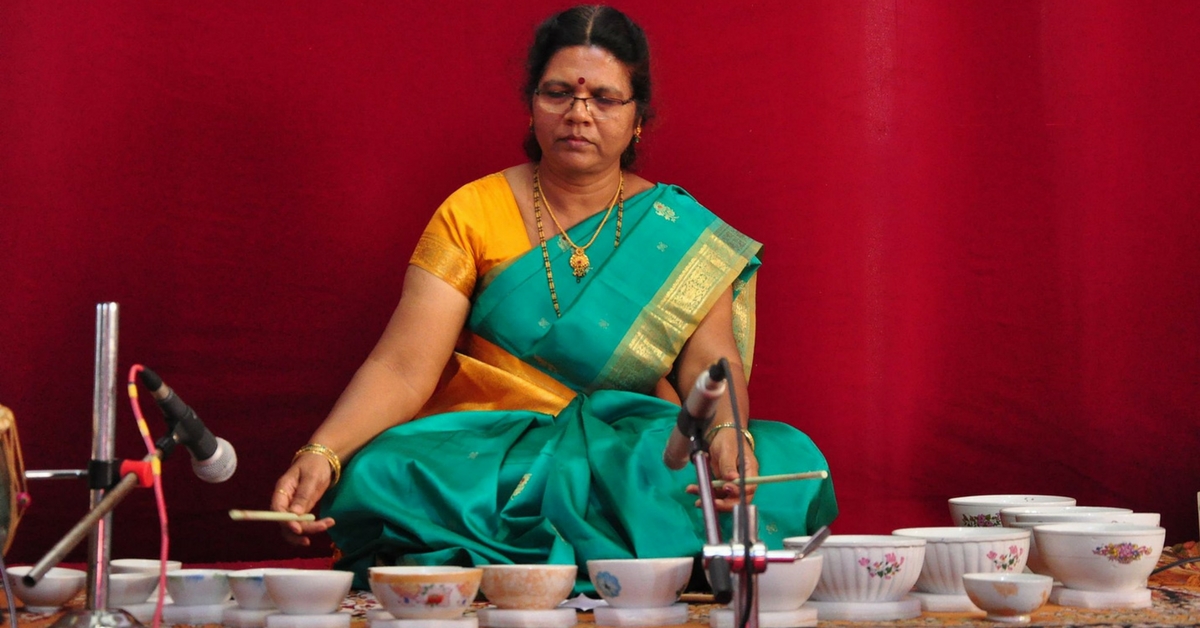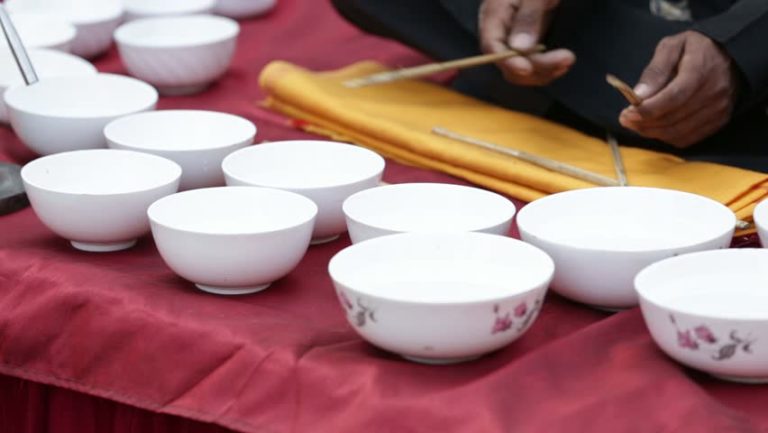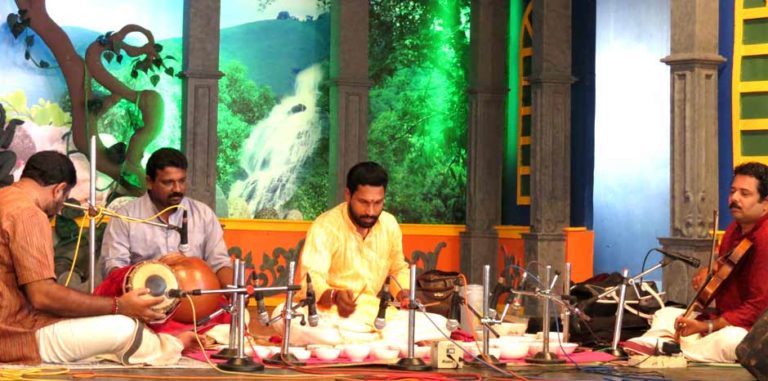TBI Blogs: Meet the Artists Preserving Jalatarangam, the Ancient Art of Creating Music From Water Waves
The sound of moving water—be it the waves of a sea hitting the shore, or the gentle flow of a river—has always enthralled the best of us. To commemorate the essence of life, Nazariya brings you Jalatarangam, a percussion instrument that is tuned with water, not strings!

The sound of moving water—be it the waves of a sea hitting the shore, or the gentle flow of a river—has always enthralled the best of us. To commemorate the essence of life, Nazariya brings you Jalatarangam, a percussion instrument that is tuned with water, not strings!
Jalatarangam is an Indian melodic percussion instrument that involves numerous ceramic or metal bowls filled with different levels of water, aligned in unique patterns. When the edges of the bowl are stroked, they produce water waves that produce a sound so melodious that one would never really want it to come to a halt.
The emergence of Jalatarangam is found in Vātsyāyana’s Kamasutra as playing on musical glasses filled with water. However, today, this instrument has tumbled into anonymity, despite its historical prominence. Being the most traditional Indian classical music, some scholars think that in the ancient period, these were in routine practice around the eastern border of India.
The medieval musical treatise of Sangeet Parijaat has classified this instrument under Ghan-Vadya, i.e. an idiophonic instrument in which sound is produced by striking a surface, also called “concussion idiophones”. The Sangeet Saar (manuscript on classical Indian music and dance) considered one with 22 cups to be the complete Jalatarangam, and one with 15 cups to be of mediocre status.
The cups are of varying sizes, made of either bronze or porcelain.

Today, artists generally prefer china bowls, numbering around 16 in normal use. The number of cups depends on the melody. In order to play this instrument, the player arranges the cups in a half-circle in front of him/her to be able to reach them all easily.
He/she pours water into the cups, and changes the pitch by adjusting the volume of water in the cup. The player then softly hits the cups with a wooden stick on the border to get the sound. However, playing this instrument is not at all easy. It requires a lot of skill to produce music leading to trance.
Sangeet Saar also mentions that if the player can rotate the water through a quick touch of the stick, he/she can achieve nuances and finer variations of the note.

Poets of the Krishna cult have mentioned the wonders of Jalatarangam in their literature work. Many contemporary players of Carnatic music do attempt to produce Gamak (a fast meend or spanning 2-3 notes, normally deliberately forceful and vigorous, and repeating in an oscillatory manner), often in the face of skewed sounds and lack of required control.
George Harrison played the Jalatarangam on the title track of his 1982 album ‘Gone Troppo’. In India, Seethalakshmi Doraiswamy, Shashikala Dani, and Nemani Somayajulu are noteworthy Jalatarangam players. Also, one of the major Jalatarangam pros is artist Kottayam TS Ajith Kumar, hailing from Kerala. His appealing passion towards this instrument led to his creativity in incorporating both melody and laya (the tempo or speed of a piece), thus opening a new style of playing the instrument.
Today, he performs in concerts worldwide and promotes the music of Jalatarangam, which people have forgotten today with the emergence of extensive varieties of music.

Jalatarangam is a unique type of music, and the most soothing one as well. We must highlight and promote it to release it from obscurity, and once again leave its audience with ecstasy. The idea of water waves, when laid together with proper techniques, releasing sound that is so alluring, is truly transcendental.
This article originally appeared on Nazariya. If you know any artists Nazariya can work with, please send in the details on email.
Featured Image Source: By Sugnandani (Own work) [CC BY-SA 4.0], via Wikimedia Commons
Like this story? Or have something to share? Write to us: [email protected], or connect with us on Facebook and Twitter.
NEW: Click here to get positive news on WhatsApp!
This story made me
- 97
- 121
- 89
- 167
Tell Us More
We bring stories straight from the heart of India, to inspire millions and create a wave of impact. Our positive movement is growing bigger everyday, and we would love for you to join it.
Please contribute whatever you can, every little penny helps our team in bringing you more stories that support dreams and spread hope.


















